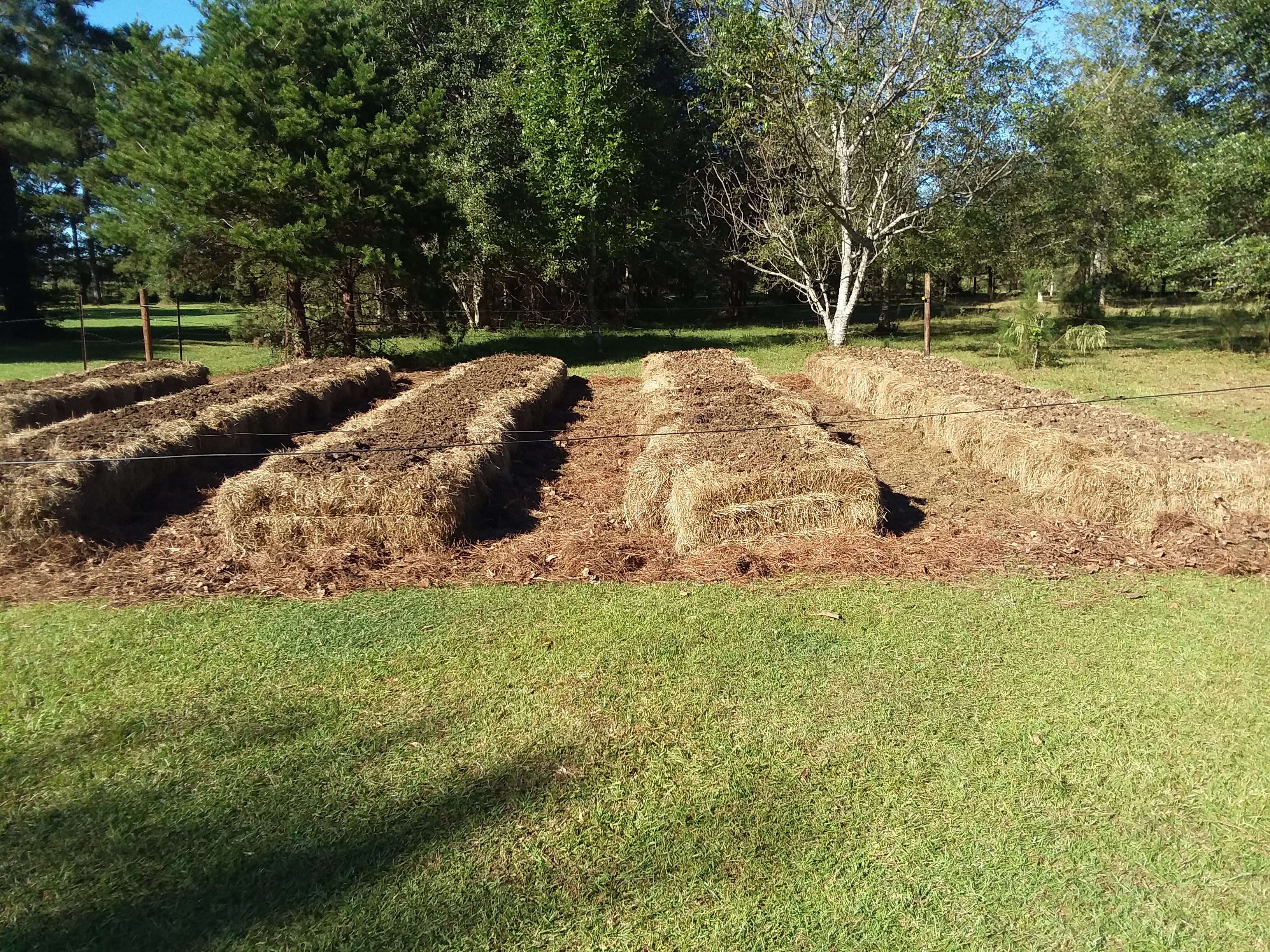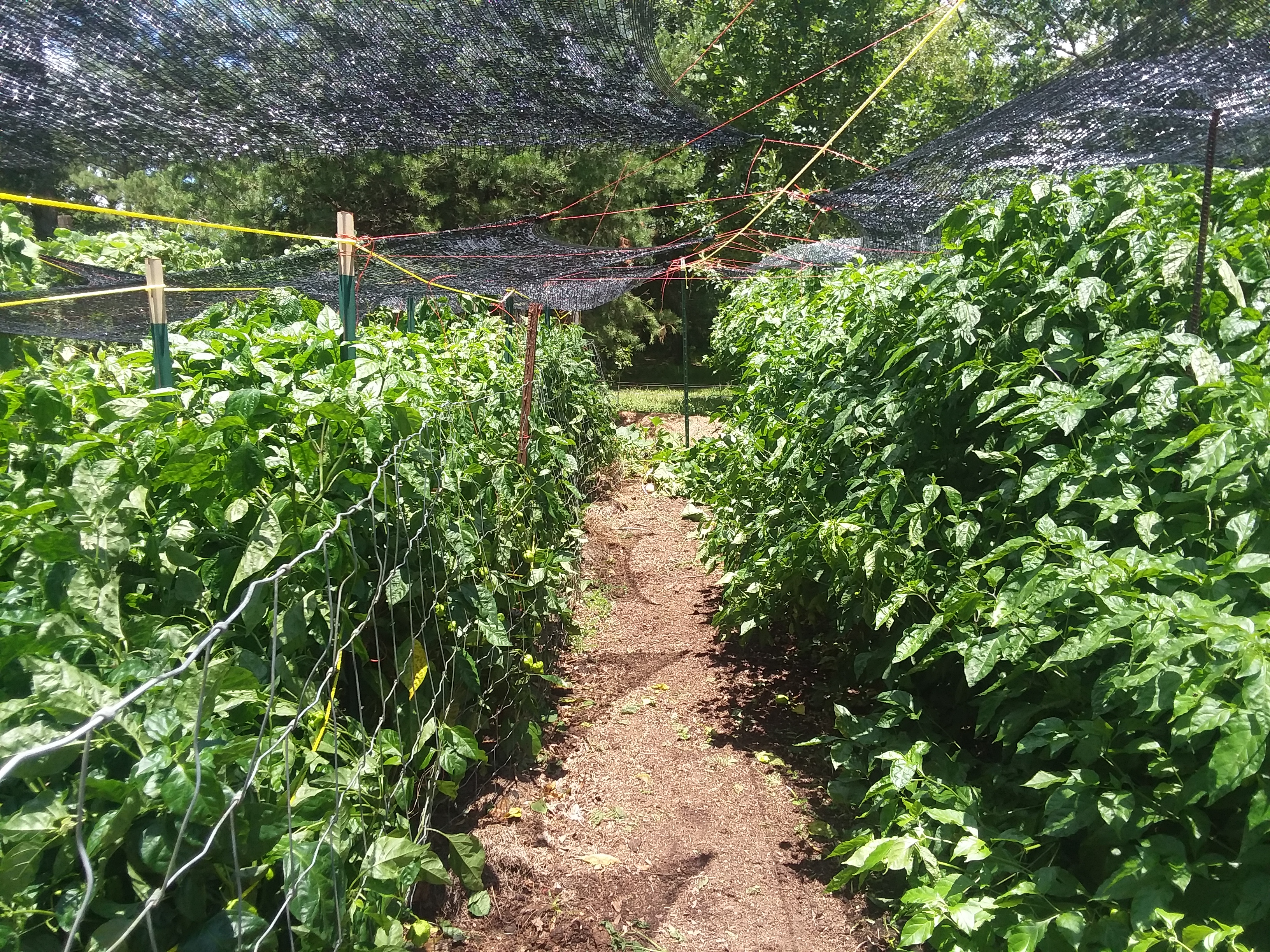I've been a member for a while but never posted a grow log. My usual garden is too boring for that. I use 20-30 pots and overwinter my mama plants in a hillbilly winter shelter. Our ground here isn't good for in soil gardening and I've not been enthused enough to undertake the work and expense to build raised beds.
Now I have my peppers working the way I want and have the need for a much larger grow to supply a project. The main peppers I'll grow will be reaper, douglah and fatalii. For a couple of years I'll do hay bale gardens and heap tons of organic trash into the area. I have monumental amounts of pine straw, oak leaves and bonfire ash every year to dump in the walkways. I think this will do a world of good to make this new garden area mo'betta for eventual in ground growing.
I closed off a 38x38 patch in the NE field that gets full sun. This is the area I chose. The big painted guy is my fertilizer supplier.
The little painted guy is my running buddy and load inspector.
Now I have my peppers working the way I want and have the need for a much larger grow to supply a project. The main peppers I'll grow will be reaper, douglah and fatalii. For a couple of years I'll do hay bale gardens and heap tons of organic trash into the area. I have monumental amounts of pine straw, oak leaves and bonfire ash every year to dump in the walkways. I think this will do a world of good to make this new garden area mo'betta for eventual in ground growing.
I closed off a 38x38 patch in the NE field that gets full sun. This is the area I chose. The big painted guy is my fertilizer supplier.
The little painted guy is my running buddy and load inspector.








